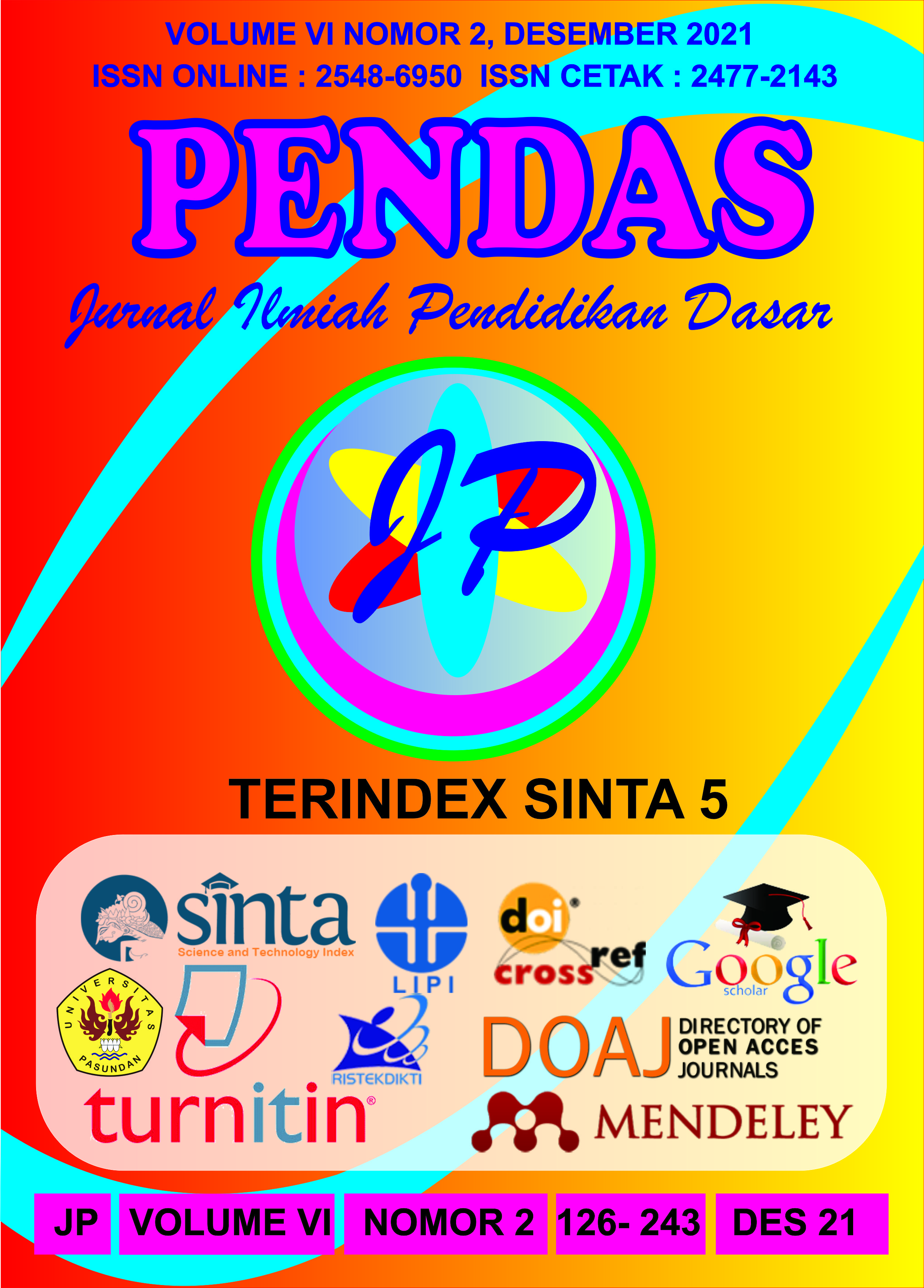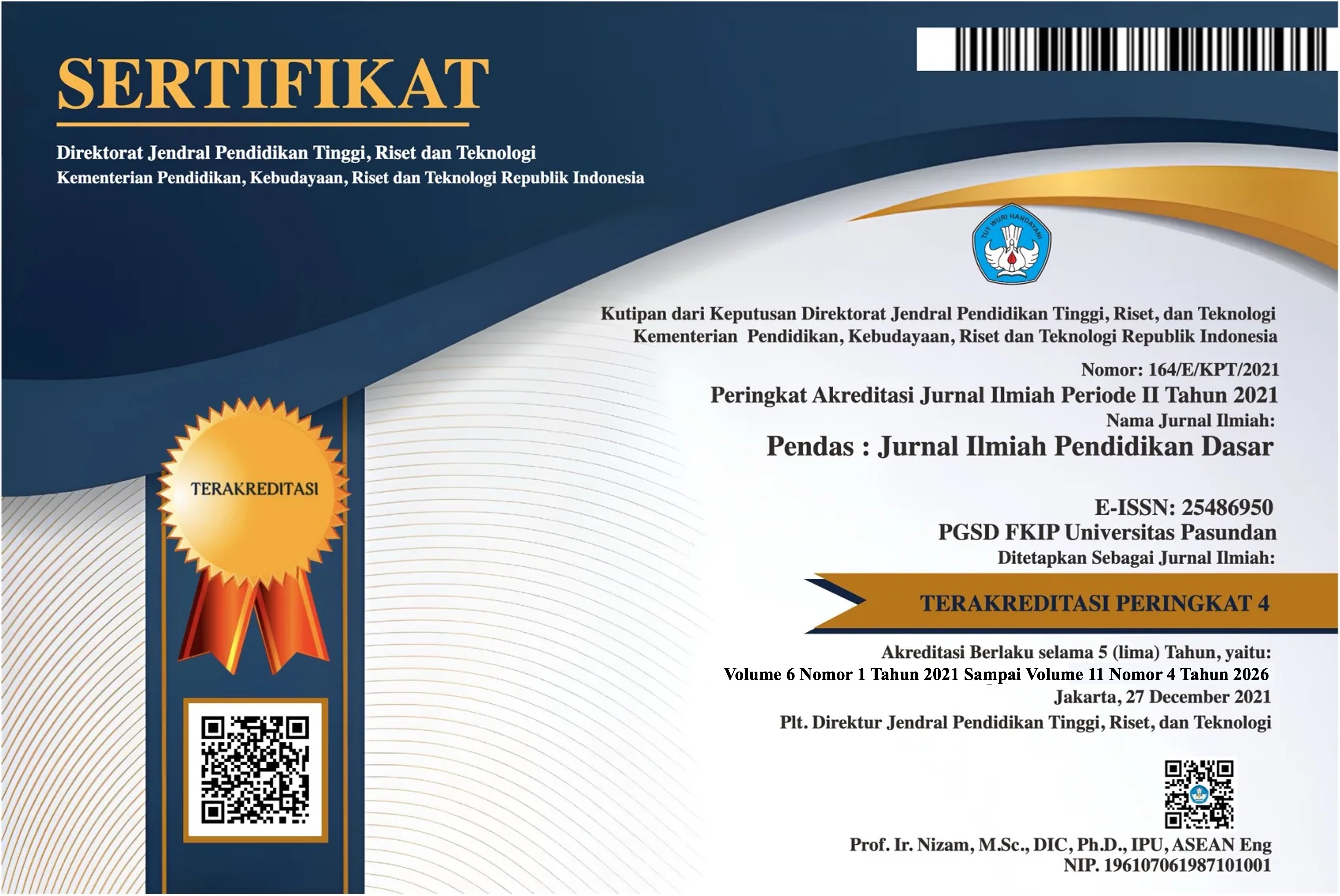DAMPAK NEGATIF PENGGUNAAN GADGET TERHADAP PERILAKU SISWA SEKOLAH DASAR DI ERA GLOBALISASI
DOI:
https://doi.org/10.23969/jp.v6i2.4677Keywords:
siswa, gadget, perilakuAbstract
Dengan berkembangan jaman pada saat ini gadget yang sudah menjadi konsumsi sehari-hari bisa menjadi senjata makan tuan bagi generasi anak-anak. PSehingga tujuan dari penulisan ini adalah menganalisi dampak dengatif gadget di era globaslisasi ini bagi anak-anak di umur-umur sekolah dasar. Artikel ini mengkaji berbagai jurnal dan sumber yang berhubungan dengan tema penelitian yang di jelaskan diatas. Model yang di jelaskn untuk menjelaskan artikel ini adalh deskriptif dengan meriew berbagai jurnal dan buku. Di erra saat ini akhirnya banyak yang mendapati hasil bahwa gadget lebih banyak di gunakna oleh anak-anak untuk bermain game, menonton, dan bukan nya belajar atau mencari hal-hal baru yang berdampak positif bagi anak-anak. Sehingga banyak peneliti yang menganggap bahwa peran dari Orang Tua dan Guru jadi sangat penting, karena guru dan orang tua menajdi orang dewasa yang bisa memberikan ketat khususnya orang tua mengenai bagaimana seorang anak bisa mengoptimalkan penggunaan gadget di usia sekolah dasar.
With the development of today's era, gadgets that have become daily consumption can become the master's weapon for the generation of children. So the purpose of this paper is to analyze the positive impact of gadgets in this era of globalization for children of elementary school age. This article examines various journals and sources related to the research themes described above. The model described to explain this article is descriptive by reviewing various journals and books. In the current era, many finally find the result that children use gadgets more for playing games, watching, and not studying or looking for new things that have a positive impact on children. So many researchers think that the role of parents and teachers is very important, because teachers and parents become adults who can provide strict guidance, especially parents, on how a child can optimize the use of gadgets at elementary school age.
Downloads
References
Alghamdi, Y. (2017). Negative Effects of Technology on Children of Today Negative Effects of Technology on Children of Today Yasser Alghamdi Oakland University. August, 0–13. https://doi.org/10.13140/RG.2.2.35724.62089
Ariani, A. (2017). Effects of Playing with Gadgets on Elementary School Children in Urban and Rural Environment. Advances in Health Sciences Research (AHSR), Volume 2, 2(Hsic), 22–27. https://doi.org/10.2991/hsic-17.2017.5
Hamidah, N., & Purnamasari, U. D. (2017). Childhood in Digital Generation : Using Gadget for Cognitive , Emotional , and Social Development. Proceeding of International Conference On Child-Friendly Education, 268–273.
M, S. (2017). The Impact of using Gadgets on Children. Journal of Depression and Anxiety, 07(01), 1–3. https://doi.org/10.4172/2167-1044.1000296
Rusnilawati. (2018). Gadget Optimization To Improve the High Order Thinking Skill (Hots) of Students in Elementary School. Proceeding of International Conference On Child-Friendly Education, Muhammadiyah Surakarta University.
Sari, D. N. (2020). An Analysis of the Impact of the Use of Gadget on Children’s Language and Social Development. Advances in Social Science, Education and Humanities Research, Volume 449, 449(Icece 2019), 201–204. https://doi.org/10.2991/assehr.k.200715.041
Srinahyanti, S., Wau, Y., Manurung, I., & Arjani, N. (2019). Influence of Gadget: A Positive and Negative Impact of Smartphone Usage for Early Child. ACEIVE, 06. https://doi.org/10.4108/eai.3-11-2018.2285692
Syifa, L., Setianingsih, E. S., & Sulianto, J. (2019). Dampak Penggunaan Gadget terhadap Perkembangan Psikologi pada Anak Sekolah Dasar. Jurnal Ilmiah Sekolah Dasar, 3(4), 538. https://doi.org/10.23887/jisd.v3i4.22310



















